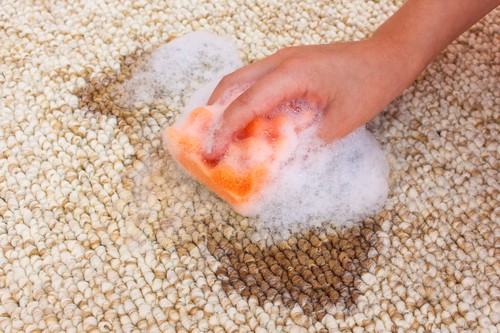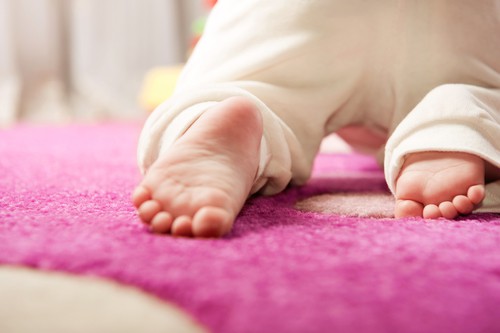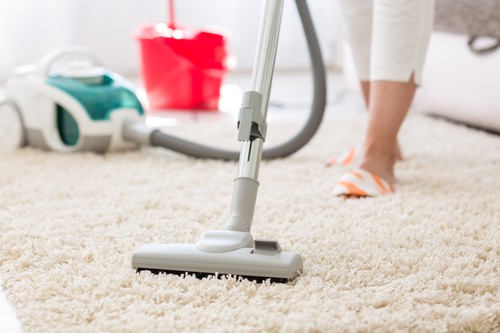Carpets and rugs add pattern, color, texture, and, of course, warmth to a room. They easily transform a room’s feel and look, making your home more inviting and cozy. But, to enjoy their benefits for long, taking proper care of your valuable investment is key. Below are some cleaning tips, among others, that will help you maintain your carpets beautiful looks for long!
1. Keep them Clean
It is important to limit the amount of dirt that gets into your carpets by placing doormats at the entries of your home or just adopting a shoes-off rule. Also, regular vacuuming will allow you to catch and remove dirt and dust particles before they sink deep into the fibers of the carpets. When cleaning, focus more on the areas where dirt accumulates more, such as high-traffic areas and within a couple of feet of outside doors (6-12 passes are enough).
The easiest, most effective, and safest way to deep-clean your carpets is to take them to a professional. With their equipment and the various professional cleaning methods (i.e. steam cleaning, hot-water extractions, etc.) used, you will get a fab result. But, you can also rent an extraction machine and clean the carpets or rugs on your own. Just make sure you don’t use too much cleaner and don’t leave the rug too wet.
2. Spot Clean

Blot – Don’t try to rub a stain out. You will just push it deeper into the pile. This will mat your fibers. Instead, cover the area with a clean towel and press down with the heel of your hand to blot up the spill. Repeat until all the liquid is absorbed (always use dry towels). If the spill is large and if you have a wet-dry vacuum, then use it to remove the stain. First, ensure you have removed most of the liquid/material before blotting.
Soapy Water – Make your own spot-cleaning solution by diluting less than ¼ teaspoon of hand-washing soap in a quart of warm water. It is important to use clear soap as hand-washing soaps are creamy and laundry detergents too alkaline and could leave a sticky residue.
Rinsing – To remove the solution you have used to treat spills, blot the area with a wet towel or mist it with clean water. Then, with a dry towel, blot the area and repeat until there is no residue coming out.
3. Vacuum Properly
Carpets collect dust, dirt, and allergens that circulate in the air you breathe and fall on the ground due to gravity. So, it is necessary to keep the area rugs and carpets as clean as possible to avoid health issues, such as asthma (very common among children) and allergies. Depending on the type of vacuum you use, you may either make things worse or better. Those with HEPA filters are found to trap most of the dust from the air in the machine. Vacuums without an HEPA fillet just shoot dust into the air, which worsens the problem. But this is not it. When searching to buy a vacuum, make sure the dust it causes in the air doesn’t exceed 100 microgram/m3. This is the dust you generate when you scratch your head a couple of times.
How to Clean your Area Rugs and Carpets per Type:
SYNTHETIC
Multiple passes with a vacuum cleaner in varying directions will do. Make sure the beater brush is set to the height of the pile and always change the bag when half-full. After ½ full, the efficiency reduces.
For liquid spills, blot as described above. If you notice a discolored area, this means that there is a sticky spill residue. Remove the trapped soil and clean the area by misting with warm water before blotting.
For wall-to-wall carpeting, you may need to steam clean (check warranty) so professional help might be needed. If you want to try cleaning it yourself, rent an extraction machine and use it, after you vacuum thoroughly. Be careful not to use the solution on the spill without testing it first. Pour a few drops of the spot-cleaning solution into a saucer and let it evaporate. If the residue that remains is sticky, don’t use that solution.
Finally, when drying the carpet or area rug, you can use air-conditioning or fans to speed the process.
WOOL
The same routine cleaning procedure applies to wool carpets. Only, if you have low-pile carpets, it’s best to avoid using a rotary brush as you may fuzz the yarn, and use a floor tool instead.
To remove liquid spills, mist the area with water and then blot as described above.
Note: Don’t use highly alkaline cleaners or ammonia because they damage wool.
For deep cleaning, home cleaning is not recommended for both wall-to-wall carpets and area rugs because wool absorbs much more water than other fibers. As a result, they get very heavy, difficult to maneuver, and hard to dry. That aside, most cleaners available in the market are too alkaline to use on wool.
TIP: Do you want that your wool carpet is actually wool? Many of today’s rugs are made from synthetic fibers, even Oriental-style carpets. A way to test for wool is to cut off a strand and burn it, If it smells like burned hair, then it’s wool.
PLANT
Again, the same routine technique is used as for synthetic rugs. What causes too much wear on plant carpets is grit. To remove it effectively, it’s better to use a beater brush.
For liquid spills, blot promptly, making sure the damp areas are not left wet for too long. For that reason, it’s best to use a hair dryer (low heat mode) or a fan. This is because plant fibers are not as stain-resistant as wool or synthetic. This goes even for the plant carpets that have been treated with a water repellent.
When it comes to deep cleaning, only dry methods are recommended by manufacturers so allow a professional rug cleaner to do this job for you.





